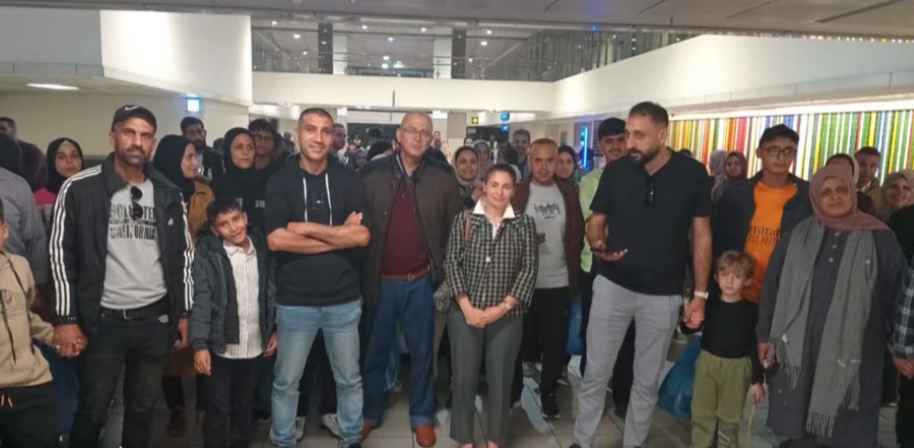[Native American News\”Broken Promises” Report]
The report’s key findings build on the alarming concerns raised in the 2003 report Quiet Crisis: Federal Funding and Unmet Needs in Indian Country, which exposed the government’s lack of investment in Indian Country…The federal government has failed to keep accurate and comprehensive records of federal spending on Native American programs, making monitoring of federal spending difficult. As a result of these failures, Native Americans continue to rank near the bottom of all Americans in terms of health, education, justice, and employment.
Photo: Facebook
This week, the House Natural Resources Subcommittee for Indigenous Peoples of the United States held an oversight hearing to review the U.S. Commission on Civil Rights report “Broken Promises: Continuing Federal Funding Shortfall for Native Americans.”
The report, released in December of 2018, confirms what tribes across the country already know that the federal government is not meeting its trust responsibilities and that federal agency spending in Indian country is woefully inadequate.
The report’s key findings build on the alarming concerns raised in the 2003 report Quiet Crisis: Federal Funding and Unmet Needs in Indian Country, which exposed the government’s lack of investment in Indian Country. The hearing featured testimony from report authors, administration witnesses, and tribal leaders whose communities have faced challenges due to chronic underfunding.
Reform efforts in the 16 years since publication of the Quiet Crisis report have produced only minor improvements. This year’s Broken Promises report explains in detail how federal programs designed to support the social and economic well-being of Native Americans remain chronically underfunded and are often inefficiently structured, leaving many basic needs in the Native American community unmet.
The federal government has failed to keep accurate and comprehensive records of federal spending on Native American programs, making monitoring of federal spending difficult. As a result of these failures, Native Americans continue to rank near the bottom of all Americans in terms of health, education, justice, and employment. The most egregious disparities acknowledged in the report include:
*More than 25 percent of Native Americans live in poverty, the highest poverty rate of any ethnic group in the United States. Native Americans are victims of violent crimes at a rate twice the national average.
*Native American women are 10 times more likely to be murdered and four times more likely to be sexually assaulted than the national average.
*1 in 3 Native American women will be raped in their lifetimes.
*Native Americans are killed in police encounters at a higher rate than any other racial or ethnic group.
*Native Americans as a group suffer from the highest rate of diagnosed diabetes in the nation.
*The rate of post-traumatic stress disorder among Native children is the same rate as veterans returning from Iraq and Afghanistan and triple the rate of the general population.
*Native Americans experience suicide rates that are 1.6 times greater than the national average.
*The rate of alcohol-related deaths for Native Americans is six times greater than that for all groups.
*Native American students are the least likely, among all students nationwide, to attend a high school that offers Advanced Placement courses.
*The majority of Native students attend a high school that lacks a complete range of math and science courses.
*Between 2003 and 2015, the number of overcrowded households or households without adequate kitchens or plumbing grew 21 percent from 91,032 households to 109,811 households.
*The number of households with severe housing costs grew 55 percent, from 42,401 families to 65,667 families.
*14 percent of households in Indian Country have no access to electricity, a figure 10 times the national average.
*About 40 percent of Navajo Nation members do not have running water in their homes.
*50 percent of surveyed Bureau of Indian Affairs detention facilities are in poor physical condition, with issues such as leaky roofs, defective heating and fire systems, and rust-stained bathroom facilities.
Patricia Timmons Goodson, the Vice-Chair of the U.S. Commission on Civil Rights, noted in her testimony that the Trump administration is making matters worse:
For example, in the most recent budget request analyzed in our report, for Fiscal Year 2019, the total amount of federal funding the Trump Administration requested for programs serving tribes and Native American communities across over twenty federal agencies and sub-agencies would constitute a $2 billion decrease from the FY 2018 enacted federal funding level of $22.0 billion.
More specifically, this is what that request and current funding look like in particular issue areas facing the Native American communities: the Trump administration’s budget proposal sought to end programs with proven track records of success in improving subsistence conditions in Native American communities, and to reduce funding for programs critical to Native Americans’ wellbeing. President Trump’s Fiscal Year 2019 budget also proposed eliminating funding for an initiative – the Tiwahe initiative—that has succeeded in reducing violent crime by 56 percent over three years in four Native American communities. In addition, that same budget requests more than $144 million reduction in funds for BIE schools, which educate 7 percent of Native American students.
This hearing is part of the Natural Resources Committee’s efforts to ensure that tribal communities have access to the resources they need and to which they are legally entitled. Since taking the majority, Natural Resources Democrats have held hearings on climate change impacts on Tribal communities highlighted the negative impact that Trump’s shutdown had on Indian Country, conducted two hearings to investigate the epidemic of missing and murdered indigenous women, conducted oversight of Native American Boarding Schools, met with Navajo Uranium Miners, introduced legislation to fund Indian water infrastructure, decried drilling in the Arctic National Wildlife Refuge in Alaska, and passed bills to protect sacred sites from extractive industry development, among other actions.






